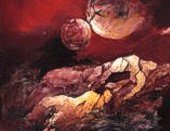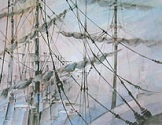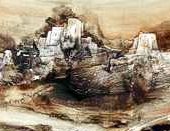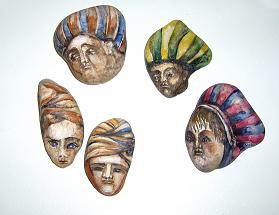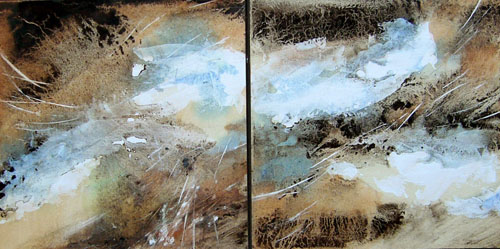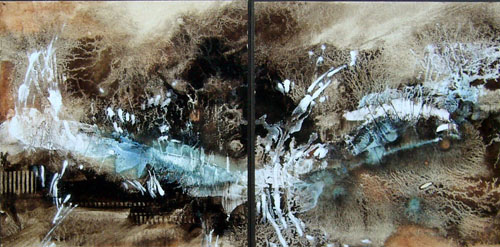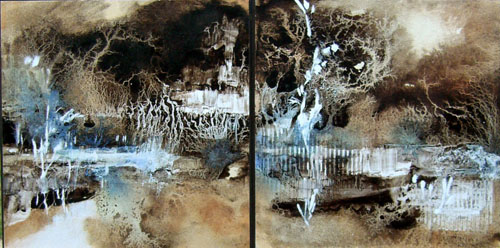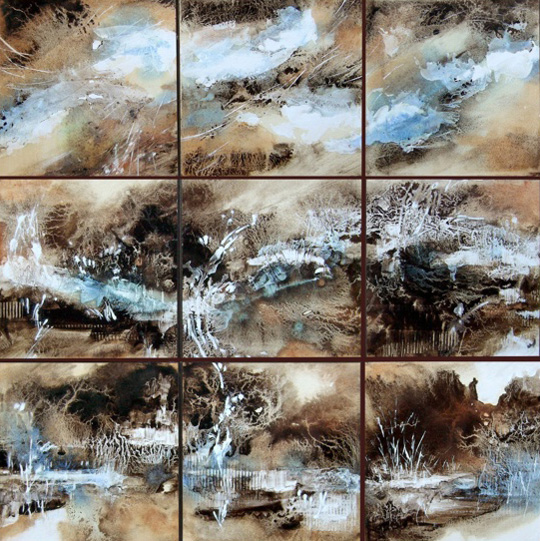|
||
|
How a painting evolves (2) The triple triptych Paysage composť (Composite Landscape)
This work is composed of nine panels of the same size (30x30 cm) in mixed technique (tar and acrylic). They were created in the early 2000's, a crucial time in Fabienne Quinsac artistic journey. She experiments a lot, mixing tar with other materials, and notably acrylic -which is rapidly going to take precedence over tar. In the meantime, Fabienne produces a long series of colored tar paintings in small formats (mainly 30x30 or 40x40 cm). The origin of Paysage composť is three distinct diptychs painted with the same materials, colors and medium:
Then, a third panel was added to each diptych. However, the third panel (on the right) of the second diptych (below) seems to extend more naturally than for the two other diptychs. So, in the beginning, maybe Fabienne had not three diptychs, but one triptych and two diptychs... and then wanted to create a unity.
Then the three diptychs were put together to create a unique piece (the photo is not clickable):
This is, more or less, the path we can imagine from the pictures taken by Fabienne. But the process may have been very different. Perhaps the idea of creating a mosaic came before she painted the triptychs. This Composite Landscape was exhibited in 2006 in the castle of Saint-Jean-le-Blanc (Loiret, France). What happened to it? We don't know. Was it sold in one piece or "cut to size" and scattered? We have no other trace than the pictures taken by Fabienne.
Another example of the evolution of a painting through time with Balanced Still-Life.
|
